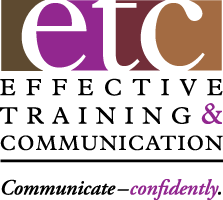As hard to do is it is to say three times real fast. So, let’s simplify the process for entrepreneurs who need to communicate the culture of their organization to prospective employees. Break it down into smaller chunks.
Chunk #1 – Ask yourself. ‘What do you think the culture is now?’ Be very specific. Be honest. Use conversational language. Then, ask yourself ‘what you’d like it to be and why.’So, you’ve just defined the present state and future state of your organizational culture clearly.
Chunk #2 – Ask your people. Ask all of them, not just the leadership team. Ask them to be specific, honest and conversational. Also ask them ‘what they’d like it to be and why’.
Chunk #3 – Review the two sets of descriptions and combine them where you can. If there are sharp contrasts between your description and theirs, deal with those differences in separate conversations.
Hint #1 – You can simplify the above steps by hiring a consultant who specializes in culture issues. Their involvement may be worth the investment if they save you lots of time and produce better results, especially in comparing your current state with similar businesses in your industry or market.
Hint #2 – Hire a grad student in HR to review the data and those comparisons. This would leave you with the analysis and next steps portions of the process.
Hint #3 – Depending on your local area, you could even create a project for a team of students or even the entire class. Plus, they may be close to the demographics of your entry level hire.
Hint #4 – Hire a professor who teaches a course like Organizational Dynamics or Finding New Employees to do same.
Chunk $4 – Time to share the revised/expanded description with those staff who participated in the basic brainstorming process. Let’s hope each person sees something she or he came up with initially. Ask if anyone has comments or questions.
Hint #5 – Thank them for their help and send each a finished text the next day — to imply that you were interested in their input and hadn’t already assumed it was a done deal before the meeting.
Hint #6 – Based on the size of your organization, it might make sense to share it with your leadership team first to get their input, then share it with everyone.
Chunk #5 – Once you have a concise and as accurate a description of your culture as you can afford to create, don’t put it on your website and recruiting material ver batim. That’s right … don’t communicate it! Instead, include your Mission, Vision and Values Statements and a very general, even vague, reference to your culture. This way, you make it much more difficult for savvy candidates to memorize everything and tell you what you want to hear during the interviews.If you don’t have a Mission, Vision and Values Statement, someone in COSE can probably help you create one.
Chunk #6 – Now, you’re ready to interview candidates. Ask lots of open ended and behavior-based questions. Take good notes.
Hint #7 – Bring up culture first. Ask questions like ‘What did you like most about working for your last employer/previous employers.’ What would you change about them?’ ‘Describe an ideal work place and indicate why each item is impor tant to you,
Hint #8 – Listen to the answers and compare them to key points in your cultural definition. Ask specific questions about those items are missing.
Chunk #7 – Now, share your collective view of your culture. Say something like ‘Let me share what our people consistently say about our culture and what it’s like to work here.’
Hint #9 – Watch their reactions and ask drill-down follow up questions as appropriate.
Chunk #8 – Rate each candidate against your list of ideal criteria for new hires, not against each other. Make sure items about fit and culture are weighted highly. Offer the job to the highest score.
Hint 10 – Review your notes from that ‘How to Be a Manager’ class you took years ago. Review some key learnings like ‘Fit before’ function’ or ‘You can `teach job skills. You can’t teach enthusiasm, integrity, work ethic or motivation.’
Chunk #9 – Schedule a brief follow up chat with each new hire after a month. Ask them to compare their initial expectations about the workplace culture with what they’ve experienced so far. Keep notes for future culture revisions.
Chunk # 10 – Pat yourself on the back for having created and used an excellent workplace culture tool to help select the best candidates for each open position. And please share this article and your experiences with colleagues in other organizations who might find it interesting and usefu
